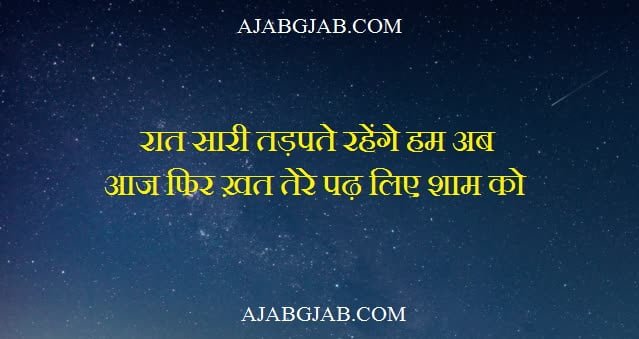Introduction
Urdu literature is a treasure trove of emotions, and within its realms lies the enchanting world of Ghazal. A beautiful poetic form that embodies the depth of human emotions, the Urdu Ghazal has been a source of solace, joy, and reflection for centuries. With its mesmerizing rhymes and captivating metaphors, the Ghazal has the power to take readers on a soul-stirring journey through the realms of love, longing, and melancholy.
History of Ghazal
Ghazal, also spelt as “Gazal,” is a poetic form that originated in Arabic Bedouin tribes in the Arabian Peninsula in the 7th century and later became popular in various regions, including Persia, India, and the Ottoman Empire. The word “ghazal” is of Arabic origin, derived from the root “غ-ز-ل,” which means “to love” or “to yearn.”
And, during the 8th and 9th centuries, it spread to other regions, including Persia (modern-day Iran). Persian poets like Rudaki and Hafez contributed significantly to the development and popularity of the ghazal in Persian literature. However, the ghazal was introduced to India in the 12th century through Persian poetry. With the advent of the Delhi Sultanate, Persian became the court language, and the ghazal gained popularity among Indian poets.
- During the medieval era, Urdu, a language that developed through the fusion of Persian, Arabic, and regional Indian languages, emerged as a major language for poetry. The ghazal flourished in Urdu, becoming an integral part of its literary tradition. Moreover, the Mughal rulers of India, who were great patrons of art and literature, further promoted the ghazal. Renowned poets like Mir Taqi Mir and Mirza Ghalib contributed significantly to the development of the Urdu ghazal during the Mughal period.
The Elegance of Ghazal
A ghazal typically consists of rhyming couplets, known as “Sher,” with each couplet standing independently and conveying a complete thought or emotion. Ghazals often explore themes of love, beauty, longing, desire, spirituality, and philosophical musings. They reflect the complexities of human emotions and the depth of human experiences. The last word of the first couplet is repeated as the rhyming word at the end of every following couplet. The first couplet often sets the rhyme pattern and includes the refrain or “Radif,” which is a repeated word or phrase. The opening couplet is called the “Matla.” The second line of each couplet ends with the same rhyming word, known as “Qaafiya.” For example,
“Ranjish hi sahi, dil hi dukhane ke liye aa, Aa phir se mujhe chhod ke jaane ke liye aa.”
Translation: “Come, even if it is just to show resentment, Come, once again, to leave me and go.”
The Ghazal takes us through the emotions of a lover, who is resigned to their fate of being abandoned. The delicate choice of words and imagery beautifully portrays the raw feelings of heartache and longing.
The Influence of Ghazal in Culture and Bollywood
Throughout history, the Urdu Ghazal has played an integral role in shaping the cultural landscape of the Indian subcontinent. It has found its way into the hearts of people across different generations and backgrounds. The soulful renditions by renowned Ghazal singers, like Jagjit Singh and Mehdi Hassan, have further immortalized the verses, carrying the emotions to millions of listeners.
The ghazal has a significant influence on Bollywood music also. Many Bollywood songs are inspired by or incorporate elements of the ghazal genre, such as its poetic and romantic themes, melodic compositions, and soulful vocals. Renowned playback singers like Jagjit Singh, Ghulam Ali, and Pankaj Udhas have popularized ghazals in Bollywood, creating a unique blend of traditional and contemporary musical styles.
The Ghazal Today
However, like many traditional art forms, the ghazal has faced challenges in modern times. With the rise of technology and changing cultural preferences, some fear that the traditional form of ghazal recitation and appreciation might be declining in popularity among newer generations. Additionally, the commercialization of music and poetry has led to a shift towards more contemporary and pop-inspired styles.
Nonetheless, there are efforts to preserve and promote the ghazal. Many talented artists, poets, and musicians continue to create and perform. Moreover, contemporary poets are infusing new life into this art form, maintaining its relevance in the digital age. As we explore the contemporary Ghazal, we witness a fusion of traditional and innovative elements, giving birth to an enchanting blend of old-world charm and new-age expression.
Conclusion
The Ghazal remains a timeless gift to the world of literature, serving as a profound reflection of the human experience. Its captivating melodies and heartfelt verses touch the depths of our souls, making us ponder the intricacies of love, longing, and melancholy. The Ghazal’s charm lies in its ability to unite people through shared emotions, breaking barriers and bringing hearts together through the power of words.
As we conclude our journey through the enchanting world of ghazals, let us immerse ourselves in the timeless beauty of this poetic form with a few lines of a ghazal:
“Har shakhs ki zindagi mein ek kahani hai, Har roshni mein chandni ki rawani hai.”
Do you share the same admiration for ghazals? Comment your views or share your favorite ghazal, and let us celebrate the beauty of literature together.

